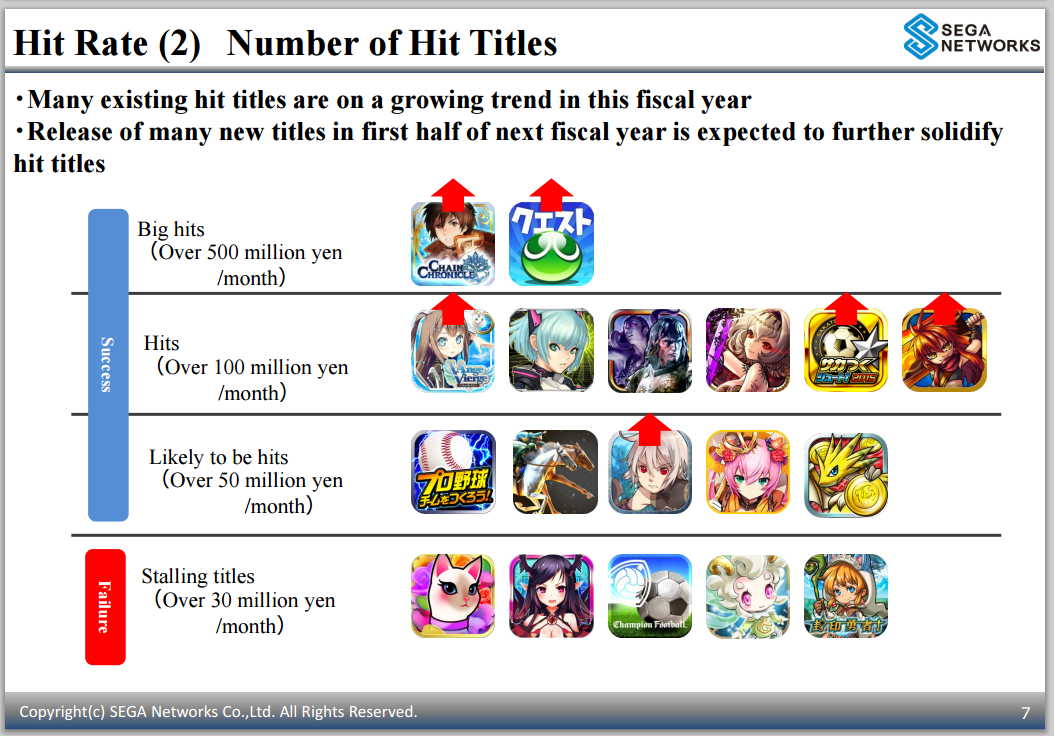The only issue I have with mobile talk is the lack of hard data, but that's the nature of the beast. It can make worthwhile discussion difficult especially for titles that don't hit the upper echelons.
For instance with Terra Battle I have no idea how successful it actually is.
To help illustrate what I said above, let's actually repeat this scenario with Media Create numbers.
So, this is a new title that clearly didn't hit the upper echelons:
08./00. [PSV] Abunai: Koi no Sousa Shitsu - Eternal Happiness # <ADV> (Asgard) (¥7.344) - 4.266 / NEW
Can you tell me the following:
1.) So the game sold 4266 units at a list price of 7344 yen. How much of this money did Asgard see? Obviously they sell to the retailer for less than 7344 yen, and then they also had to pay a licensing fee to Sony along with shipping and manufacturing costs.
2.) What were the development and marketing costs of the game? Once we figure out question #1, it's still not helpful until we actually know what the game cost to make.
3.) Looking at Japan LTD Rank, their previous games had debuts of 5096 (2980 yen) and 9743 (4800 yen) respectively, and were on the PSP. They never charted again, so we don't know their LTDs. Were these games profitable? How has the Vita impacted their cost structure?
4.) We know they're still in business, so they haven't run out of money. However, I can't find any website for the company in English, so I can't tell if they're a public company, and I also can't tell if they're in debt or not. They're only had game releases (at least on Japan LTD Rank) since 2013, so it's possible they're still living off an initial investment loan. What can you tell us about the health of this company and how this release contributes to it?
5.) Based on all of the above, how do you think this release will impact the company? Was it a success? Will it lead the company to grow, contract, or stay the same? Will this change their strategy surrounding game releases?
If simply having numbers is illuminating, then we should be able to derive greater meaning from them.
That's not to say numbers aren't important, they're clearly a good source of information, but if we can't derive this type of information from them, they're obviously not enough to get a very informative picture.
As you say, we have some general idea of the top 3rd pulling in somewhere around and over 1$ million a day, what I'm interested in is, what is the fall off after the fact? I've always been curious, is the mobile market incredibly "top heavy" in its successes? How well is a game in the middle of the charts, like TerraBattle, doing on a day to day basis? Is it a comfortable income? Is it actually living day-to-day?
Since mobile games, after their initial development costs, become more about service platforms, they work on different budgets than long-standing console/handheld series. This changes, further, the answer to my questions of where we can really define a success or 'good profits; and where we can't, since in the long-term they need only produce a singular base package once, and then make minor additions to it over months and years.
Yes, this is a similar problem as to what I detailed above. We must rely on publisher statements to infer things about the market. For example, this Sega chart is one of the most helpful.
Similarly, how I determined whether Bravely Second was successful was based on relativism as opposed to the actual numbers. We have no idea what the development budget or promotional budget was, but knew the game had debuted a lot lower than Bravely Default, which was bad. We also knew that handheld games with similar sales volumes rarely ever saw sequels at Square Enix.
However, this wasn't a guarantee of meaning, and simply an educated guess based upon trends. The thing that ultimately solidified its lack of success was Asano saying he was immediately going to submit the plan for Bravely Third if the game was successful enough, and then shortly after release, saying they were trying to decide if it made more sense to try another sequel or to try an entirely new game instead.
Without this type of commentary, we could simply analyze the situation and makes predictions, and then wonder for years if we were right. Right now we still don't even know if the game was profitable, and this decision was made simply upon it not being profitable enough, or if it actively lost money, which would help inform future discussions much more. We also don't know what types of platforms the team might work on next instead, which would give us some more hints at the implications of not having enough success.
We also hardly get info regarding digital sales for retail games (or digital only games). We do get the Famitsu estimates, but as far as i know, there is no info regarding how reliable those are. They might be accurate or they might be way off, for all that we know. I still enjoy reading them though, so please dont stop posting them

There is also sometimes a noticeably difference in the numbers between the trackers, making it uncertain which one that is most accurate.
And even more importantly, we don't get DLC figures. We found out Fire Emblem had great DLC success from a Nintendo financial presentation, and it obviously had a tremendous impact on the business strategy for Fire Emblem If. However, simply looking at Media Create would have never told us this.
In a market increasingly dominated by microtransactions, with even a non-trivial number of free 2 play games coming to dedicated devices, we're losing out on a lot of revenue information that could notably change the perception of a product's success.

